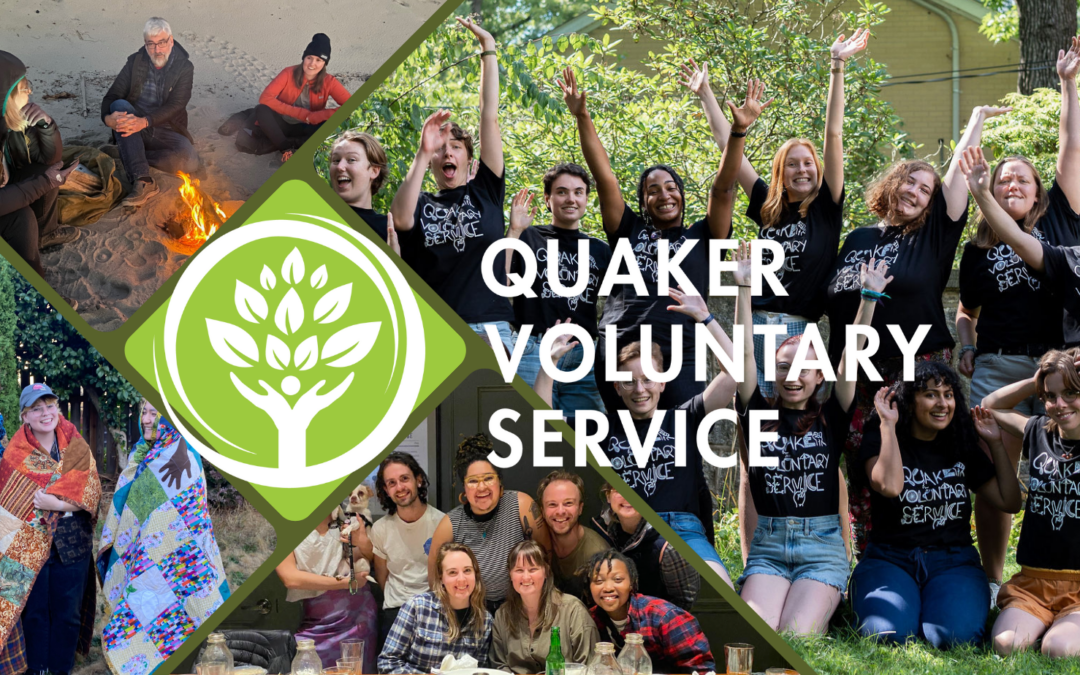Photo: A collage of fun QVS moments featuring Alumni, Staff, and Fellows from recent years.
Finding our compass…
As we shared in our June 2023 Supporters’ Briefing, we have been exploring program shifts to better meet the needs of young adults today and respond to the decrease in application numbers in the last two years. For context on how we understand the recruitment challenges we are facing, you can read our blog post Shifting Tides.
We reached out to young adults to gauge interest and gain a better understanding of the barriers keeping young adults from applying to QVS. We shared the survey on social media platforms and other listservs. The survey was shared outside of our immediate sphere, meaning we reached some young adults who had never heard of QVS. We received 133 responses, which provided us with significant data and insight. Of the respondents, 44 were in the age bracket of 18-20, meaning they cannot yet apply for QVS but will be able to in the next couple of years. We received 66 responses from people aged 21-30; these are young adults who could currently serve in QVS. Lastly, 23 respondents were over 30 years old, and while they do not fit in the target age range for QVS, we asked them to reflect on their 20’s and if they could see QVS fitting into their life path.
We asked the 110 respondents who fall in the 18-30 age range if QVS could be a meaningful part of their life and received encouraging responses. Only six people indicated that they did not think QVS would be meaningful. One quarter of younger respondents said they were very or somewhat likely to do QVS. Over one third of respondents 21-30 years old said they were likely or very likely to spend a year doing QVS. That’s nearly 25 people! It was heartening to see so many young adults with an interest in applying to QVS.
Of those who indicated the most interest in QVS, the most notable potential barriers related to other options available to them. Pursuing further education was the most common alternative option, followed by feeling a need to start a career and thus maximize earning potential, and considering other service year programs. For respondents who were unsure of whether they would consider QVS, the biggest barriers were a need to make money and start a career, prioritizing higher education, and that an 11-month program felt too long. Respondents who did not think they were likely to do QVS shared the same sentiments about why they would not consider the opportunity with the added concerns of paying off student loans and feeling hesitant about living in community. When asked what would make them more likely to apply to QVS, the top two options chosen were: “it would help to know I have enough money to meet my needs during a QVS year” and “it would help to know I would leave QVS with more money in savings.”
Overall, we heard a lot of financial concerns from young adults, ranging from getting started on a career and maximizing earning potential to prioritizing a graduate school education and concerns about paying off student loan debt. For the people who expressed the greatest interest in doing QVS, the most significant barriers related to other opportunities they are interested in pursuing such as graduate school, job opportunities, and other service programs. We were greatly encouraged by the interest and sense of meaning that young adults felt QVS offered, and we are committed to making some adjustments, wherever we can, to make the program more accessible.
Below are some quotes that reflect some of the sentiments shared among respondents:
“If I wasn’t committed to pursue a career path that improves the environmental sustainability and justice of the business world I could see myself taking a year to participate in QVS. If there had been an option to do a QVS summer internship during undergrad I would have definitely pursued it as a way to better discern potential work areas I like/dislike. Thanks for accepting input! – Respondent
“I was not really aware of what QVS is and what it seeks to offer, but after reading into it, I love the principle behind it. This is a program I might want to undertake but I am not sure if I would commit to 11 months to it. I am sure the program is well planned out to make the right use of all the time that one spends there but as young adults or even adults in their 20s, there is a natural rat race we all confined to because we are part of this capitalistic society that promotes it. This makes 11 months a major commitment especially when we have to get back to our old lives after that.” – Respondent
“I’m interested in taking a year with QVS after I graduate while also working toward getting my teaching license. I wonder if this is doable or if that would be too much on my plate!” – Respondent
In the next several weeks we will share blog articles about each of the program shifts the QVS Board of Directors discerned. With the data from this survey and conversations with young adults and partner programs, we see a way forward of staying rooted in our mission and meeting young adults where they are now. QVS began over 10 years ago and we recognize the changes the wider world has experienced during this time. We will continue to be nimble and experiment in order to support young adults in having transformational spiritual and vocational experiences.
More Quaker Service Stories
#QuakerService- Gordon Foster
Gordon Foster was born in 1918, in Cincinnati, OH, and grew up on the family farm near Loveland, OH. His Quaker ancestors were involved in the anti-slavery movement and the farm was a stop on the Underground Railway. Throughout his life, Gordon was guided in his...
#QuakerService- Brigitte Alexander- Escaping 1930s Germany
Quaker Voluntary Service is part of a long history of Quaker action and witness in the world. We want to honor that legacy and help our young adults see and frame where they fit into this story. In this first of our...
#QuakerService- Nancy Foster Neumann & Louis Neumann
Nancy Wales Foster was born in 1914 and grew up in southwestern Ohio, on the farm where her Quaker ancestors had settled in 1810. After graduating from Swarthmore College, she returned to Ohio and began teaching in 1934. She spent several summers as an AFSC staff...




